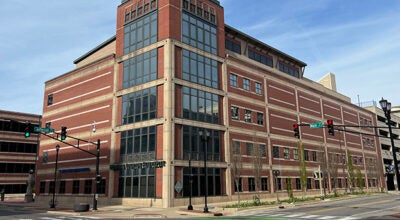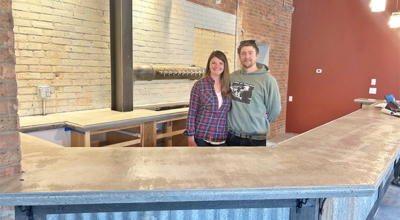Housing shows some life
Published 5:52 pm Sunday, February 12, 2012
Nationally, housing sales are reported improving.
How does that translate to Dowagiac, where three homes built in 2011 were fire replacements?
Martha Hassle, a Realtor with Cressy and Everett Real Estate, sees “lots of activity. We’re busy,” though at this point doing “homework” for prospective buyers more than “closing a lot of deals.”
Hassle, who has been in real estate for 13 years, said the recent sale of a Mill Pond second home to an Illinois doctor buoyed office spirits.
“People who typically don’t buy are buying, but they’re picking up investment property cautiously,” Hassle said.
“It has picked up,” agrees Ernestine Matthews of Matthews Real Estate, pointing to Southwestern Michigan Association of Realtors Inc. (SMAR) statistics for January which show 12 Dowagiac and Marcellus sales, compared to four in the first month of 2011 — a 200-percent increase.
But “there are a lot of foreclosures,” Matthews said, with which Tom Jerdon of Jerdon Real Estate would agree.
“I don’t see anything but a long slog with more foreclosures.”
Jerdon hopes for election of a new president.
“There is so much wrong with the housing market, many things have to turn,” the Southwestern Michigan College trustee said Friday. “Dodd-Frank wiped out lending. Applying for a mortgage is worse than a colonoscopy. Before, you could get one if you had a pulse,” creating the housing bubble.
“Now, Congress has gone the other way for the bulk of middle America. Capital is sitting on the sidelines. Banks aren’t interested in loaning money.”
Besides that 200-percent sales increase, the average sales price for Dowagiac and Marcellus increased 78 percent, from $46,500 to $82,538, while Edwardsburg to Cassopolis fell 34 percent, from $133,500 to $88,066 , and Galien to Niles slipped 5 percent, from $113,647 to $108,421.
Regionally, the average sales price, $162,529, was off 1 percent.
In January, Edwardsburg to Cassopolis posted 15 sales, up 67 percent from nine; and Galien to Niles showed no change at 28. Area sales rose 23 percent, from 129 to 159. Days on the market increased 46 percent for Dowagiac and Marcellus, 95 to 139, but fell 13 percent for Galien to Niles (157 to 137) and 46 percent for Edwardsburg to Cassopolis (225 to 121).
“The housing market in our area from September through December, for the most part, showed positive signs of stabilization,” according to Gary Walter, executive vice president of tri-county SMAR in St. Joseph. “While selling prices fluctuated, three out of the four months the selling prices were within just thousands of dollars.
For example, the average selling price dropped to $148,297 in October, but in the other months ranged from $170,600 to $176,543. The same was true for the median selling price, which dropped in November to $88,000, but ranged from $109,000 to $114,960 during the other months. The total number of houses sold during this same end-of-the-year period also held steady at 186 to 199.”
Dollar volume for Dowagiac and Marcellus in 2011 was $10,822,251 — off 36 percent from $16,960,436 in 2010. Edwardsburg to Cassopolis increased 21 percent, from $22,255,650 to $27,026,081. Galien to Niles rose 2 percent, from $38,695,151 to $39,647,801.
In 2011, Dowagiac’s 119 residential sales closed for an average sales price of $90,943 plummeted 26 percent from 160; Niles was almost identical, 455 and 457; and Cassopolis/Edwardsburg dipped 3 percent, from 183 to 178.
Hassle and Jerdon wonder where jobs will come from to support home buying, which is impacted by layoffs or wage cuts as well as perceptions of school districts. Jerdon owned rental property in Edwardsburg, which also has proximity to Indiana jobs and shopping. Marcellus is “40 minutes from everything” and “Dowagiac falls in between.”
Jerdon specializes in lake property, further impacted by tough economic conditions in Illinois and northwest Indiana.
Lake property is “tracking downward,” he said, just as auto repair booms because people hang onto vehicles longer.
For example, he said, a Magician Lake property sold for $375,000 commanded $730,000 in 2006.
With a five- to seven-year supply, “real cottages” at lower price points are more likely to move.
He detects a “cultural shift” among traditional Chicago resorters who find themselves pressed for time.
Jerdon developed Villamere in 1997, when the 23 homes commanded $112,000 to $120,000.
As time went on, valuations increased to $140,000 to $150,000, but three sold recently went for $74,000, $90,000 and another pending for $77,000.
In another example, a city four-apartment house sold last fall for $45,000 — about what it brought in the early ’90s and much less than the city valuation, $125,000.
“Farmland is going up for many reasons,” he said. “Michigan has a favorable property tax structure which is attractive to investors.
“Farming is at record levels.”







